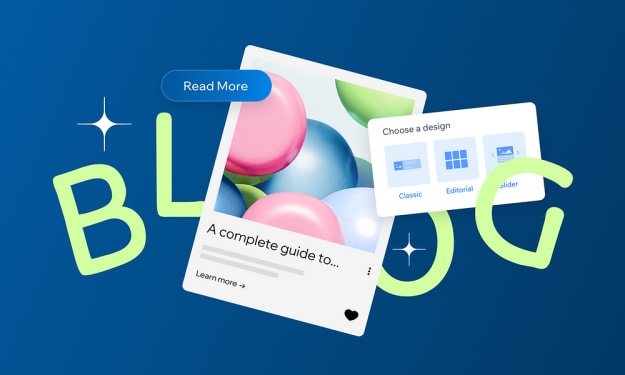Why it's Important to get out of our Buckets
The Art and Importance of Interdisciplinary Studies
Imagine a painter who only uses one color on their palette. While they might create some interesting monochromatic pieces, their work would lack the vibrancy and depth that comes from a full spectrum of colors. Similarly, approaching knowledge through a single discipline is like painting with just one color. It limits our perspective, confines our creativity, and hinders our ability to see the big picture. This is the art of interdisciplinary studies. Leonardo da Vinci, Galilei Galileo, Isaac Newton, Renee Descartes, and so many more great names that we often forget; They were all polymaths. They saw the world as a complete organism where every contribution they made was part of something bigger. More importantly, they did not lose themselves into their own buckets.
The Beauty of Blending Disciplines
Think of interdisciplinary studies as a blank canvas, full of potential with color from various fields like science, art, philosophy, and technology. Each brushstroke contributes its unique texture and style, creating a complex and beautiful painting that no single color could achieve alone. For instance, consider the intersection of neuroscience and philosophy in understanding human consciousness. Neuroscientists provide empirical data on brain functions, while philosophers offer insights into the nature of experience and identity. Together, they create a more comprehensive understanding of what it means to be conscious.
“What you can imagine depends on what you know. Philosophers who know only philosophy consign themselves to a janitorial role in the great enterprises of exploration that are illuminating the mysteries of our lives.” ― Daniel C. Dennett

Beyond the Comfort Zone
Stepping out of disciplinary comfort zones can be daunting, but the rewards are immense. Interdisciplinary studies build creativity, innovation, and critical thinking. They challenge us to see the connections between seemingly disparate ideas, leading to breakthroughs that a single-discipline approach might miss.
Take the field of environmental studies, for example. To address climate change, we need the insights of ecologists, economists, sociologists, political scientists and who knows whom else! Ecologists study the natural processes and impacts, economists analyze the cost and benefits of environmental policies, sociologists explore the human behaviors driving climate change, and political scientists devise feasible and effective policies. It is only by integrating these perspectives can we develop sustainable solutions. Without these integrations, we either only have a theoretical framework with no pragmatic solution, or practical applications without any underlying foundations!
Innovation and Problem-Solving
As mentioned, interdisciplinary approaches are not just theoretical exercises; they have practical applications in the real world. For instance, in healthcare, the integration of psychology, medicine, and social work can lead to more effective patient care. A ‘big picture’ approach that considers the patient’s physical health, mental well-being, and social circumstances results in better outcomes than treating these aspects in isolation.
Similarly, in tech industry, the fusion of design, engineering, and behavioral science can produce user-friendly and innovative products. Something that none of them could achieve in isolation. Companies like Apple and Google thrive by integrating aesthetic design with cutting-edge technology and an understanding of human behavior. This approach is what sets them apart and drives their success.

The Importance of Being Whole
In a world increasingly driven by specialization, it’s easy to lose sight of the bigger picture. However, human life itself is inherently interdisciplinary. We are not just our jobs, our hobbies, or our academic pursuits; we are complex beings with diverse interests and experiences. Embracing an interdisciplinary approach reflects this nature of our existence.
Many people today feel like mere cogs in a vast, impersonal machine. They go through the motions of their daily tasks without a sense of how their work contributes to the larger picture. This sense of detachment and lack of purpose can lead to feelings of unfulfillment and even despair. When we don’t understand the broader impact of our efforts on society, our work feels meaningless and monotonous.
To combat this, we need to see the big picture; understanding how our specific roles contribute to the greater good. Interdisciplinary studies enable this broader perspective by integrating knowledge from various fields and letting us see how our contributions fit into larger societal frameworks. For example, a software engineer might feel disconnected from the end-user experience until they study aspects of psychology and design, realizing how their code can significantly improve someone’s daily life.
When we approach problems and questions from multiple perspectives, we acknowledge the complexity of the world and the interconnectedness of knowledge. It encourages empathy, as we learn to appreciate the value of different viewpoints and experiences. This holistic understanding fosters a more inclusive and compassionate society.

Takeaway
The art of interdisciplinary studies lies in its ability to transcend boundaries, bridge innovation, and cultivate a deeper understanding of the world. We can vastly enrich our knowledge and enhance our ability to tackle sophisticated challenges by stepping out of rigid categories and embracing a holistic approach. So, let’s take a cue from the empty canvas, dripping with potential, and blend the diverse flavors and harmonies of different disciplines to create a richer, more vibrant understanding of the world.
About the Creator
Enjoyed the story? Support the Creator.
Subscribe for free to receive all their stories in your feed. You could also pledge your support or give them a one-off tip, letting them know you appreciate their work.






Comments (1)
Great work. We are all connected to other areas in some way. We just have to find them for a greater understanding for what our field or fields need.